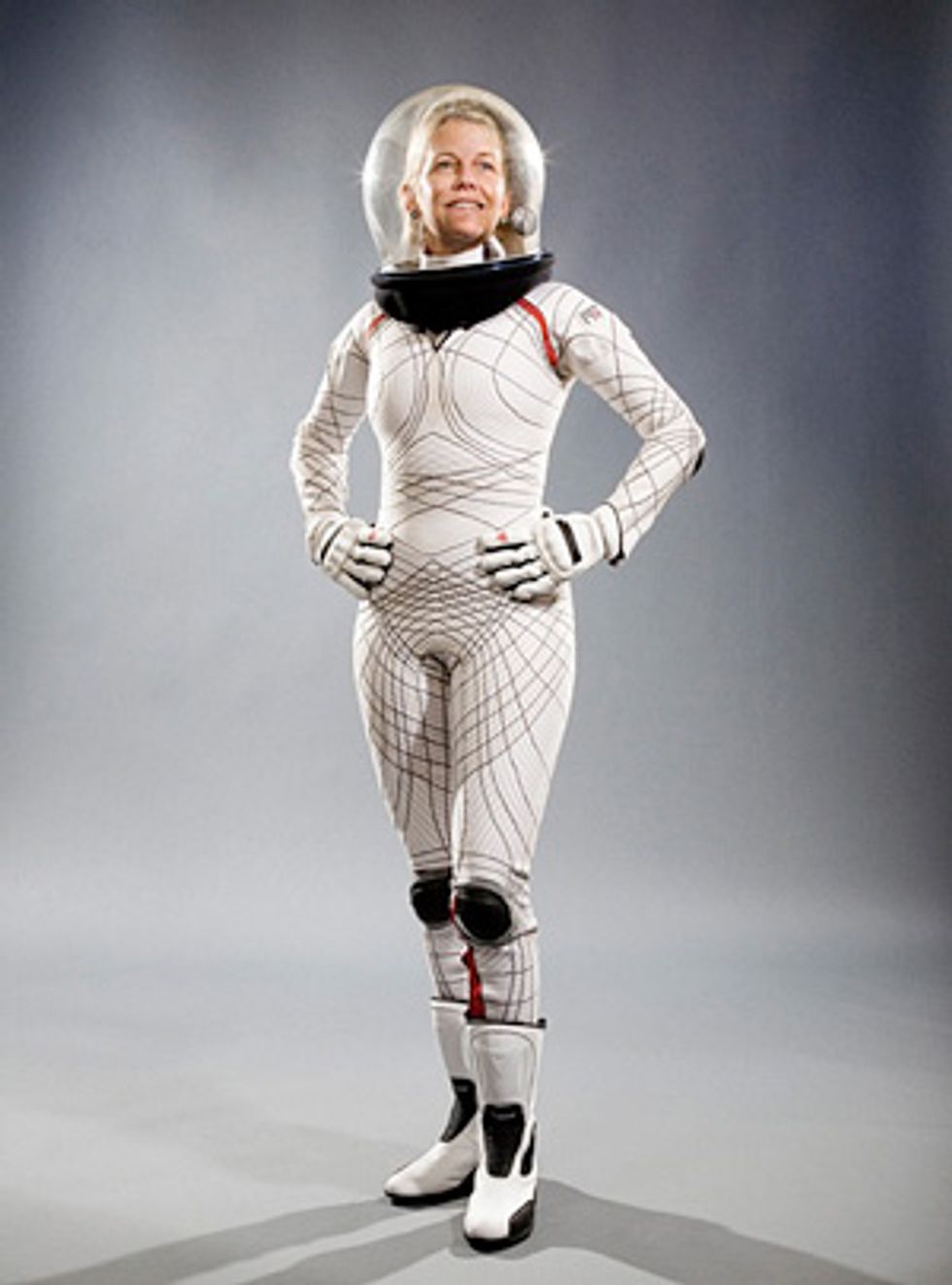What to Wear on Mars
Those bulky Apollo-era space suits are so yesterday


This is part of IEEE Spectrum’s Special Report: Why Mars? Why Now?
There are lots of unanswered questions about the best way to get people to Mars. What engines should power their ship? How will the crew prevent bone and muscle loss in the weightless void? How can they land safely on the planet’s surface?
And then there’s this: what to wear on Mars? The lucky few who get to take those momentous first steps in the red dirt could very well be wearing something like Dava Newman’s BioSuit.
Tightly tailored to the astronaut’s body, the BioSuit looks like something out of a ’60s Italian sci-fi flick. It’s a far cry from today’s bulky space apparel, because the BioSuit works on a totally different principle.
Mars has an atmospheric pressure of 0.6 kilopascals, not quite 1 percent of Earth’s. If you were to venture out unprotected, many things would conspire to ruin your day. In particular, your tissues would expand, and your blood cells would come out of solution and congeal. That would kill you within minutes. So, as on the moon or in space, humans need some way to apply pressure to the body and keep those blood cells where they belong.
Current space suits rely on a mixture of pressurized gases, which fill them as if they were balloons. That also makes the suits bulky, notes Newman [above], a professor of aeronautics and astronautics at MIT. One reason that Apollo astronauts adopted a two-footed kangaroo hop on the moon, she says, was that their puffy suits severely encumbered them.
The BioSuit’s tight, stretchy material applies pressure to the skin mechanically rather than barometrically, without gas and with much less restriction of movement. It’s made of a mix of polymers, including nylon and spandex, so it would probably be cheap to manufacture—maybe a tenth of the US $20 million price tag of one of today’s suits, Newman estimates. Her partners on the project are the industrial design firms Trotti & Associates, of Cambridge, Mass., and Dainese, based in Molvena, Italy, which specializes in gear for motorcyclists.
The suit maintains a constant 30 kPa, or about 30 percent of Earth’s pressure. The wearer could stroll around on Mars for up to 8 hours without suffering any ill effects. Before stepping out, though, you might need to undergo decompression—known as a prebreathe protocol—if the pressure difference between the spacecraft and the space suit was greater than about 40 kPa. On the International Space Station, which is kept at 101 kPa, the prebreathe protocol takes 4 hours.
The BioSuit is basically a fail-safe design: If you tear its fabric, you lose pressure only around the tear. You could fix it temporarily by wrapping it up tightly like an Ace bandage. A rip in a gas-pressurized suit, by contrast, triggers an increase in gas flow to give the wearer time to retreat to a vehicle or habitat. But if no shelter is available or the leak isn’t fixed quickly, even a tiny tear could become a major emergency.
Newman says she’s still got a lot of work to do. “We’ve tested people for several hours in a vacuum chamber. But we need a suit that you’re going to be able to wear for a full day’s work.”
She has no doubt that someday we’ll see people bounding rather than hopping on the Red Planet. “The best movement on Mars is loping,” she says, noting that Mars’s gravity is 38 percent that of Earth’s. “Long steps with lots of aerial” will let astronauts cover more ground with less effort.
“On Mars, we’re all extreme athletes,” she adds.
For more articles, go to Special Report: Why Mars? Why Now?
About the Author
Monica Heger, a science writer in New York City, came of age in a post-Apollo world and never thought much about space exploration. So she was surprised to learn of all the ongoing research on manned spaceflight, including the advanced space suit she writes about in “What to Wear on Mars.”
To Probe Further
For more on Spacesuits, see “The Evolution of the Space Suit”